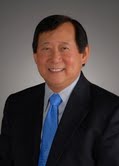 Endoscopic transforaminal decompressive surgery is one of the up-and-coming technologies that could change how traditional spine surgery is performed. Anthony Yeung, MD, founder of Desert Institute for Spine Care in Phoenix, developed the Yeung Endoscopic Spine System and all members of his practice — Desert Institute of Spine Care in Phoenix — perform it.
Endoscopic transforaminal decompressive surgery is one of the up-and-coming technologies that could change how traditional spine surgery is performed. Anthony Yeung, MD, founder of Desert Institute for Spine Care in Phoenix, developed the Yeung Endoscopic Spine System and all members of his practice — Desert Institute of Spine Care in Phoenix — perform it.
"Technologies disrupting conventional spine care involve a technique to first identify the patho-anatomy of pain generators through diagnostic and therapeutic injections," says Dr. Yeung. "This preliminary method confirms diagnosis correlating the imaging study with surgical MIS treatment."
"Selective endoscopic discectomy" is the term coined for intradiscal decompression and foraminoplasty of the subarticular and lateral recess for the foraminal approach. The diagnostic and therapeutic injections through the foramen outline patho-anatomy fluoroscopically and augment imaging studies before providing evidence of the therapeutic part of the injection with a transforaminal steroid. The transforaminal steroid provides pain relief and helps predict outcomes for surgically decompressing, ablating and irrigating the source of intradiscal and foraminal pain.
"The surgical philosophy is to focus on the elimination of pain directed toward the patho-anatomy in a degenerative spine rather than just focusing on correcting deformity or instability as a first line treatment," says Dr. Yeung. "The decompression can be confirmed in a postoperative MRI or CT scan."
The traditional treatments for spine conditions focus on correcting the imaging abnormality exclusively. These treatments are effective in the appropriate patients but only after a more extensive surgical option after the first line of treatment fails, says Dr. Yeung.
He has focused and practiced this philosophy and the endoscopic technique of transforaminal decompression, ablation and irrigation through the endoscope for more than two decades — since 1991.
"Surgical results can be predicted to resolve or mitigate the painful course of a degenerating spine to a less painful or non-painful final outcome over time," says Dr. Yeung. "The technique is being adopted all over the world, especially in Asia."
But will the procedure have staying power in the United States? That depends on several factors, including data collection and payer reimbursements.
"Payers have realized that the high cost of surgical spine care cannot continue unabated," says Dr. Yeung. "Techniques that simply eliminate the cause of pain in measured steps will stick because they work in experienced endoscopic surgeons' hands and are cost-effective, as validated in the literature."
Practices that are currently focused procedures with expensive hardware and implants will see reimbursement decreases without a similar decrease in implant price. As a result, Dr. Yeung sees effective non-fusion decompressive procedures becoming more prevalent because these procedures demonstrate as cost-effectiveness.
"Patients are seeking nonfusion alternatives as they discover new options in this technology advancing MIS spine care method to mitigate pain," says Dr. Yeung. "They seek solutions to eliminate their pain while the natural process evolves to a less painful state. Many of these alternatives are touted on the internet, but some of it is marketing hype."
The technologies that have these qualities will likely have longevity in the marketplace:
• Provide pain relief
• Alter the painful phase of degenerative processes
• Decrease reliance on expensive implants and hardware
"Even successful surgery isn't forever, as evidenced by adjacent level problems and artificial components having a timeline of wear and tear," says Dr. Yeung. "We need to focus more on decompression first, without hardware as the first line of treatment and add hardware as a staged procedure when needed during the aging or degenerative process."
For patients, it's critical to find surgeons with experience and proven outcomes instead of those who only have "marketing hype." Endoscopic technology isn't the only area to watch. Going forward, there will also be big opportunities for development in biologics.
"The areas of biologics from natural tissues, such as stem cells that can bypass the regulatory issues controlled by the FDA, present an important area of advancement," says Dr. Yeung. "Studies of its efficacy are beginning to surface. Training opportunities in residency programs, currently absent, will rapidly advance this field. Most advancements currently are from the private sector. Their visibility, however, is being validated more and more in the spine literature."

